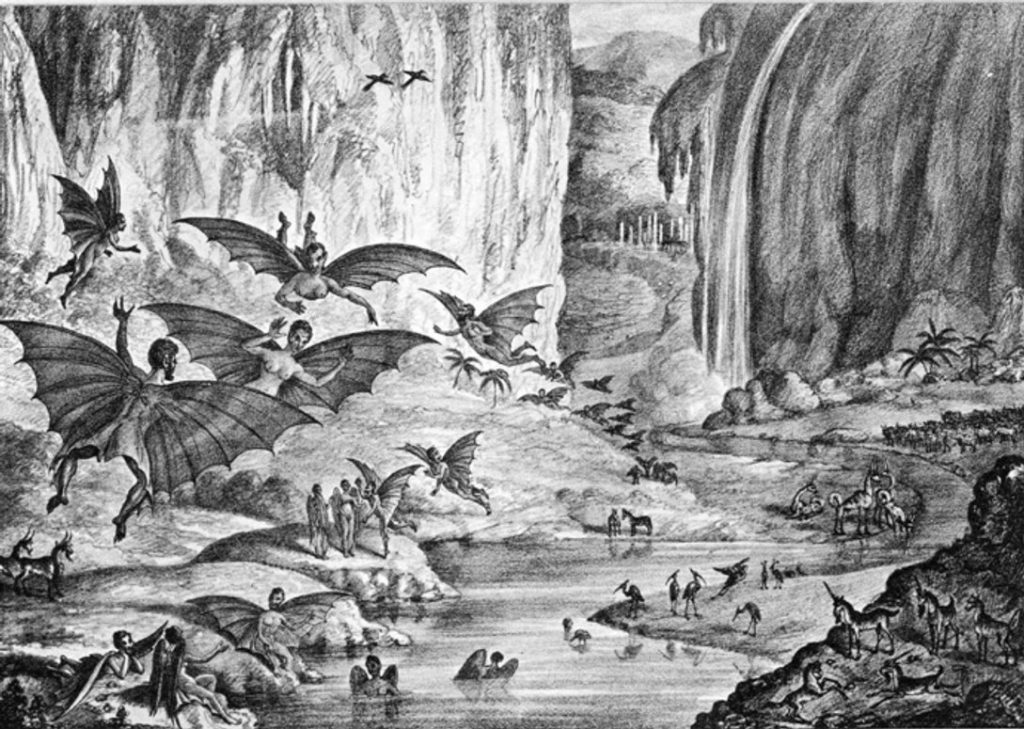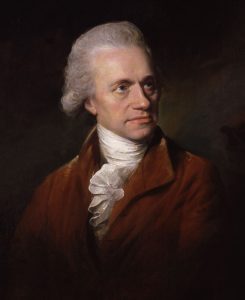
A Brief Look at the History of Extraterrestrial Life Debate
By Parandis Tajbakhsh

Source: Wikimedia Commons (Public Domain).
In 2018, the Transiting Exoplanet Survey Satellite (TESS) began its two-year mission searching for extrasolar planets, orbiting around 200,000 stars located within 300 light-years of the Earth. TESS followed in the footsteps of NASA’s Kepler Space Telescope, launched in 2009to find Earth-sized or smaller planets around other stars and to estimate the fraction of stars in our galaxy that host Earth-sized planets.
While the scientific endeavour to find other habitable planets is still in its infancy, the history of speculations about the existence of life beyond Earth is much more ancient. Despite extensive research in this field, at least within the West and the Christian world, the ‘history of extraterrestrial life debate’ has remained less well known. This post discusses some of the major events that have shaped the ‘plurality of the worlds debate’ throughout the centuries.
On the existence of other worlds, the stance of ancient Greeks fell into two extremes: on one hand, the atomists such as Epicurus argued in favour of the existence of an infinite number of worlds. The atomist school, founded on the teachings of Leucippus and Democritus, asserted that everything is made of atoms. Atomos, meaning indivisible blocks of matter, were infinite in number and constantly in random motion. Every now and then, they argued, such random motions would bring some of these atoms together and form a new world. Since atoms are infinite in number, an infinite number of worlds must exist. The “other worlds” of the atomists weren’t other inhabited planets, but rather geocentric universes, with an Earth at the centre orbited by a moon, a sun and a bunch of planets, with stars located on a crystalline vault. We, the inhabitants of this world, had no means of contact with those other worlds. Initially, this idea is reminiscent of the modern concept of multiverses: an alternative hypothesis to explain the fine tuning of the fundamental constants of the universe.
On the other extreme stood the two giants of Greek philosophy, Plato and Aristotle, who argued against the plurality of worlds. Plato’s argument had a philosophical basis, whilst Aristotle’s antagonism towards the existence of other worlds had its roots in a direct contradiction between this idea and his physics. In Aristotelian physics, the part of the universe enclosed within the terrestrial sphere was made of four elements, water, earth, air and fire. Any motion within the framework of Aristotelian physics was explained by the doctrine of Natural Places; each of the four elements of Aristotle’s universe were seeking their natural place. Water and earth tended to fall towards the centre of the universe, which coincided with the centre of the Earth, while air and fire had a tendency to rise. One can raise a piece of earth in their hand, but this was a violent motion and against the natural tendency of that element. The existence of two earths, Aristotle argued, implied the existence of two centres to the universe, a notion that is absurd.
The Aristotelian system of philosophy and physics was adopted by Muslim scholars as well as the Christian Church. For many centuries people argued in favour of the uniqueness of Earth based on Aristotle’s teachings. Many prominent theologians and natural philosophers, including Albertus Magnus (1193-1280) and his student St. Thomas Aquinas (1225-1274) denied the existence of other inhabited worlds on the basis of the Aristotelian model. In 1277 however an important event turned the argument in favour of the existence of extraterrestrials. Etienne Tempier, Bishop of Paris, was ordered by Pope John XXI, to inquire into charges of heresy. Students at the University of Paris had received a copy of Averroes’s (Ibn Rushd) new commentaries on Aristotle. Averroes (1126-1198), a Muslim philosopher, was famous for his commentaries on Aristotle and it was the circulation of his work that had aroused the Pope’s suspicions. Some of the propositions discussed in Averroes’s commentaries implied a limit on the power of God and thus in 1277, Tempier, issued a condemnation of 219 such ultra-Aristotelian propositions, of which the 34th had a direct bearing on the subject of plurality of the worlds: “that the first cause cannot make more than one world”. This in fact, is in direct contradiction with the omnipotence of God. If God wished, he could make many worlds. Following this event, people began speculating about the existence of other worlds more freely. In his famous treatise, De Docta Ignorantia (1440), or On Learned Ignorance, the 15th century German philosopher and theologian, Nicholas of Cusa (1401-1464) wrote:
Life, as it exists on earth in the form of men, animals and plants, is to be found, let us suppose, in a higher form in the solar and stellar regions. Rather than think that so many stars and parts of the heavens are uninhabited and that this earth of ours alone is peopled – and that with beings, perhaps of an inferior type – we will suppose that in every region there are inhabitants, differing in nature by rank and all owing their origin to God, who is the centre and circumference of all stellar regions.
The debate on extraterrestrial life took another leap in the 16th century, following the publication of De revolutionibus orbium coelestium (On the Revolutions of the celestial orbits, 1543)authored by the Polish monk and mathematician Nicolaus Copernicus (1473-1543). In an attempt to reduce the mathematical complexity of the geocentric universe, Copernicus introduced a Sun-Centred (heliocentric) Universe, where Earth was just another planet, orbiting the Sun. Copernicus’ heliocentric model flung the door open for Jupiterians and Saturnians to join the residents of the solar system. After all, if Earth was just another planet and it was teeming with life, other planets could also be abodes for intelligent beings. Furthermore, compared to the geocentric model, a heliocentric universe was much larger, with stars located further away. A larger universe left more space for the idea of extraterrestrials, since a very large universe with humankind as its only intelligent occupants implied that God had created the rest of space in vain. The vast expanse of space and the many stars distributed in it were of no immediate use to humankind. As God does not create in vain, some argued that these stars served to illuminate and give light to other worlds.
It was not long before Copernicus’s revolutionary proposal was backed up with some observational evidence by Galileo Galilee (1564 – 1642). Galileo was well aware that the moon could not possibly support life, partly because our own satellite experiences extreme variations in its temperature, due to the fact that a lunar day and a lunar night each last 15 Earth days. Galileo was also quite vague in uttering his stand-point on the existence of life elsewhere in the solar system. His contemporary, German fellow natural philosopher and mathematician, Johannes Kepler (1571-1630) however believed that Galileo’s discovery of the moons of Jupiter was strong proof for it being inhabited. Kepler’s reasoning relied on a teleological argument, that is, one in which the existence of an object is justified on the basis of the purpose it serves. For Kepler, Jupiter is to “the highest degree of probability…inhabited”, simply because it possesses four “little moons”, which are to illuminate the skies of Jupiterians. To Kepler “[e]ach planet in turn, with its occupants, is served by its own satellite”. Even more fascinating is Kepler’s Somnium,published posthumously in 1634, a wonderful example of an early work of science fiction where the protagonist (loosely based on Kepler himself), travels to the moon, finding it an orb with a harsh climate populated by serpent-like creatures. Christian Huygens (1629-1695), the prominent Dutch astronomer and discoverer of Saturn’s giant moon, Titan, also firmly believed that our universe is populated by other sentient beings. In his posthumously published Cosmotheoros (1698), Huygens asserts his view that extraterrestrials must resemble us in their senses as well as their anatomy. He elaborates on how mathematics, geometry and music must be universal, an idea which is accepted by many today.
Gradually, the belief in the existence of extraterrestrials became more widespread. At the beginning of the 18th century, the great German philosopher and mathematician, Gottfried Wilhelm Leibniz (1646 -1716), curiously used the idea of the existence of extraterrestrials to respond to the problem of evil: why an omnipotent, omnibenevolent and omniscient God would allow evil. Leibniz argued that all the evil that exists in the universe happens on Earth and thus “is almost lost in nothingness” compared to the “good things which are in the universe”. His argument is very much in-line with many contemporary speculations about utopian ET societies, which are believed to have risen above conflict, war and evil and are living peacefully.

Source: Wikimedia Commons
But perhaps the most unconventional views on plurality of the worlds were those of Sir William Herschel, the prominent 18th century astronomer. The discovery of Uranus is only one of Herschel’s many contributions to astronomy. Lesser known, are his views on the habitability of the moon, other planets, and even the sun. Research on Herschel’s unpublished work reveals a man obsessed with discovering life beyond Earth. A man who believed he was in fact observing growing substances on the surface of the moon, suggesting that impact craters were lunar cities. The most curious of Herschel’s hypotheses on pluralism of the worlds, was his belief that the sun was also inhabited by “beings whose organs are adapted to the peculiar circumstances of that vast globe”. This Herschel justified by hypothesizing that our star has a cool, solid, spherical interior shrouded within two layers of cloud. The outer layer, being hot and luminous while the inner layer acted as a shield, reflecting heat to keep the interior cool. As for sunspots, Herschel hypothesized these were openings within the clouds through which inhabitants of the sun could peek through and see the rest of the Universe.
While Herschel senior never fully received the respect and attention of the scientific community due to his humble origins, his Cambridge-educated son, John, went on to become the most respected astronomer of his era. John not only inherited his father’s state-of-the-art telescopes, but also some of his very strange beliefs. It is hard to believe that a polymath like John Herschel would dream of life on the sun or of finding habitable zones on the moon. By the late eighteenth century, belief in the existence of extraterrestrials had become so widespread in Europe that it was included in the sermons of many clergy. In England, the Reverend Thomas Dick (1774-1857) even published an estimate of the total population of the solar system. In his calculations, he not only populated the planets and their moons, but also the dwarf planets and rings of Saturn, ending up with a whopping figure of 21.8 trillion denizens. Such fanciful speculations and the popularity of the belief in the abundance of life, eventually gave rise to one of the most curious episodes in the history of journalism: “The Great Moon Hoax”.
In 1835, the New York Sun was competing with many similar papers to increase its sales. On 25th August the Sun, published the first instalment in a series of articles entitled “Great Astronomical Discoveries lately Made By Sir John Herschel…at the Cape of Good Hope”. According to the Sun, the report was based on Herschel’s new discoveries, published in the Supplement to the Edinburgh Journal of Science. The article claimed that Herschel’s new telescope of “vast dimensions” had allowed him to “affirmatively settle the question of whether this satellite [the moon] be inhabited”. The August 26th instalment was filled with incredible stories of lunar quadrupeds, with “a remarkable fleshy appendage…..[which] to the acute mind of Dr. Herschel….was a providential contrivance to protect the eyes of the animals from the great extremes of light and darkness to which all the inhabitants of our side of the moon are periodically subjected.” There was also a report of the discovery of a blue unicorn and cranes of “unreasonable long legs and bills”. Finally, on August 28th, people were lining the streets of New York City to get the latest copy of the Sun, which by this point had become the most widely circulated periodical in the world. They were rewarded with descriptions of the 4-ft-tall naked “Verspertilio homo”, which was covered in copper-coloured hair except on its wings that were “composed of a thin membrane ….lying snugly upon the backs from shoulders to the calves”. These man-bats had yellowish faces “a slight improvement upon that of the large orang-outang, being more open and intelligent in its expression, and having a much greater expansion of the forehead”. It was evident from “their gesticulation, more particularly the varied action of their hands and arms…that they were rational beings”. The original report of the behaviour of these Lunarians however was eliminated as it “would but ill comfort with … [the] terrestrial notions of decorum”. Then on August 31st, it was reported that a careless mistake by Herschel’s team suddenly brought everything to an end; the amazing telescope was left facing the eastern horizon overnight and the morning sun burnt a huge hole in the reflecting chamber, destroying the telescope and along with it the amazing observations it purportedly made!
The man behind the moon-hoax, Richard Adams Locke (1800-1871), later said that he did not mean to produce a false series of reports. He only meant to write satire to target people like Thomas Dick “who, with sincere piety, much information, and the best of intentions ha[d] done greater injury, at once to the cause of rational religion and inductive science, by fanatical, fanciful, and illegitimate manner in which [he] ha[d] attempted to force each into the service of the other”. However, the strong belief of Americans in the existence of extraterrestrials led them to actually read Locke’s reports as news rather than fictitious satire.
The sense of excitement surrounding extraterrestrials had long overshadowed a fundamental religious question that they raised: was the doctrine of atonement reconcilable with the existence of extraterrestrials? One of the earliest reflections on a potential tension between this foundational doctrine of Christianity and the existence of extraterrestrials came from William Vorilong (1390-1463). Pondering the question whether extraterrestrials lived in sin or not and if so, whether they are in need of redemption or not, Vorilong wrote:
[Does] Christ by dying on this Earth could redeem the inhabitants of another world, I answer that he is able to do this even if the worlds were infinite, but it would not be fitting for Him to go unto another world that he must die again.
It was not until Thomas Paine (1737-1809), in his Age of Reason (1794), argued that the belief in the plurality of the worlds is fundamentally irreconcilable with Christianity:
From whence …. could arise the … strange conceit that the Almighty … should …. come to die in our world because they say, one man and one woman had eaten an apple! And on the other hand, are we to suppose that every world in the boundless creation had an Eve, an apple, a serpent, and a redeemer? In this case, the person who is irreverently called the Son of God, and sometimes God himself, would have nothing else to do than to travel from world to world, in an endless succession of death, with scarcely a momentary interval of life.
Paine’s argument became a driving force in shaping the later positions of many on the question of extraterrestrial life. While the Scottish evangelist, Thomas Chalmers (1780-1847) asserted that the effects of redemptive actions of Christ not only propagate through time but also in space, his argument suffered from the fact that it assigned a special rank to humankind amongst other sentient beings. However, for the respected philosopher and theologian, William Whewell (1794-1866), the man who coined the word scientist, Paine’s argument was quite sensible. It led him to abandoning his belief in extraterrestrials and to develop an early version of the rare-Earth hypothesis. Whewell’s so-called geological argument was founded on the observation that waste was abundant in nature. “Thousands of seeds fall on the ground but only a few bloom”, Whewell wrote. To him, the existence of waste in nature was not a sign that God created in vain and thus there was no need to associate life to every nook and cranny in the universe. Alfred Russel Wallace (1823-1913), the co-discoverer of the theory of evolution by natural selection, also believed in an early version of the rare-Earth hypothesis, declaring that the simultaneous presence of the many necessary conditions for the emergence and subsequent evolution of life on a planet is quite improbable.
With the advancement of astronomy, and in particular, the development of spectroscopy, people gradually concluded that almost all the planets in the solar system are not habitable and many of their ideas about other stars serving as suns for planetary systems around them were physically impossible. While for a while the alleged observation of the Martian canals caused a sensation among the public and some academics, people eventually came to the realization that the tenuous atmosphere of Mars made the existence of liquid water, and for that matter living beings, impossible.
In fact, during the first half of the 20th century the consensus was that planetary systems were quite rare. It was only in 1995 that an extrasolar planet around the sun-like star 51-pegasi was discovered. Today, we know of more than 4,000 extrasolar planets, with a few of them residing in the Goldilocks Zone of their parent stars. The next generation of telescopes, in particular NASA’s James Webb space telescope, will have the capability to peek into the atmosphere of these alien worlds to search for bio-signatures, namely certain gases like oxygen, that are tell-tale signs of existence of life on a planet. Until then, all we can do is to carry on the ancient tradition of speculating about the nature of extra-terrestrials.

Parandis Tajbakhsh is science and technology studies scholar with a background in astrophysics. She received her Ph.D. in Astronomy and Astrophysics in 2009 from the University of Toronto.
Following a short post-doctoral fellowship at St. Mary’s University, she pursued a master of arts degree in Science and Technology Studies from York University, Canada.
She currently teaches at York University and Humber College. Her research interests include the history of extraterrestrial life and the interaction between science and religion.
